
Blomberg - Reliability of the Gospels
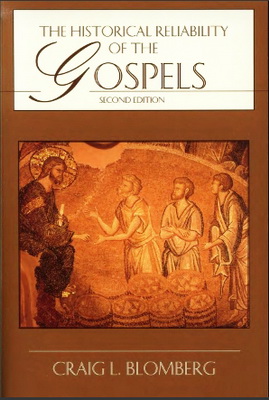
Early in August of 1987, within a few months of when the first edition of The Historical Reliability of the Gospels rolled off the presses, I celebrated my thirty-second birthday. Our first child, a daughter, was not yet a year old. I was preparing to teach my initial full-time year at Denver Seminary in Colorado.
Near the end of that month, Fran and I enjoyed our eighth wedding anniversary. In keeping with Genesis 2:24,1 knew that I wanted to dedicate my first book to her. Readers can easily do the arithmetic and determine my age and years of marriage in 2007. Authors regularly thank their families for putting up with their long hours of work on their books; after sixteen singly or co-authored or edited volumes, I could scarcely express profuse enough thanks for such longsuffering!
At least our older daughter has been away at college during the revision of this particular volume. And my younger daughter has been busy with high-school activities, while Fran herself has embarked on her doctorate in missiology and begun teaching half-time in our Intercultural Ministries Department at Denver Seminary. So I suspect that they have not noticed (or been bothered by) my work nearly as much as when I was occupied on various other writing projects a number of years back!
Craig Blomberg - The Historical Reliability of the Gospels
InterVarsity Press, USA
P.O.Box 1400, Downers Grove, IL 60515-1426, USA
Website: www.ivpress.com
APOLLOS (an imprint of Inter-Varsity Press, England)
Website: www.ivpress.com
APOLLOS (an imprint of Inter-Varsity Press, England)
Norton Street, Nottingham NG7 3HR, England
Website: www.ivpbooks.com
Craig Blomberg 2007
Website: www.ivpbooks.com
Craig Blomberg 2007
First edition Craig Blomberg 1987
Craig Blomberg - The Historical Reliability of the Gospels - PROBLEMS IN THE GOSPEL OF JOHN
A careful comparison of the first three Gospels demonstrates that the similarities between them far outweigh the differences. When one turns to the Fourth Gospel, however, one seems to have entered a different world altogether. The person who reads the four Gospels straight through from start to finish notices this most clearly; after having read many of the same stories three times over, he or she is amazed at how different John is. As a result, a viable case for the historical reliability of the Synoptics does not automatically apply to the Gospel of John as well. As with the study of the parallels among Matthew, Mark and Luke, one must look very closely at the differences between John and the Synoptics to see whether or not they reflect genuine contradictions that discredit John's value as a record of historical fact.[1]
The distinctives of John's Gospel
Even a relatively superficial comparison of John with the three Synoptics reveals at least five main categories of distinctives.[2] Probably the most obvious involves John's selection of material. Numerous features of the life of Christ, found in all three of the Synoptics, find no place in John. Some of the most noteworthy include Jesus' baptism, the calling of twelve disciples, the exorcisms, the transfiguration, the parables and the institution of the Lord's Supper. Instead, John includes narratives and teachings found nowhere in Matthew, Mark or Luke: the miracle of water turned into wine, the reanima-tion of Lazarus, Jesus' early ministry in Judea and Samaria, his regular visits to Jerusalem, and extended discourses in the temple and synagogues as well as in private meetings with both his disciples and his opponents.
Almost as striking are John's theological distinctives. First, he is the only Evangelist direcdy to identify Jesus as fully divine (1:1; 10:30; 20:28). Whereas the Synoptics suggest to some a gradual unfolding of Jesus' own awareness about his Messianic identity, along with his disciples' blindness on this issue until Peter's climactic confession on the road to Caesarea Philippi (Mark 8:27—30), John's opening chapter portrays John the Baptist, Andrew, Philip and Nathanael all confessing Jesus to be the Christ. Throughout John's Gospel Jesus reinforces this conclusion by referring to himself as the bread of life; the living water; the good shepherd; the vine; the resurrection and the life; the way, the truth and the life; and even, apparendy, the absolute 'I am' of the Old Testament, the name by which God the Father makes himself known.
Second, differences emerge in John's view of eternal life and judgment, which he sees to be already present in Christ's ministry (e.g. 3:18; 5:24) rather than primarily future; his presentation of John the Baptist, who denies that he is Elijah (1:21) even though the Jesus of the Synoptics said that he was (Mark 9:11—13); and his description of the time and nature of the Holy Spirit's arrival: before the ascension privately (John 20:22) rather than afterwards, publicly, at Pentecost.
Third, seeming contradictions of chronology appear. The Synoptics record Jesus' attendance only at the Passover feast that immediately preceded his death, and they give no clear indication that he had ever been in Jerusalem as an adult prior to that occasion. John, however, recounts three Passovers and other lesser festivals with extensive teaching ministries of Jesus in the Jewish capital. Specificevents seem to have been mislocated too. Jesus' dramatic cleansing of the temple appears in John not as a prelude to his execution but in the earliest days of his ministry (2:14-22; cf. Mark 11:15—17), his anointing by Mary of Bethany occurs not one but six days before his death (12:1; cf. Mark 14:3), and the call of Andrew and Simon to be disciples takes place in Judea prior to his return to the north instead of along the banks of the Sea of Galilee at a later date (1:35—42; cf. Mark 1:16—20). John's account of the last twenty-four hours before Christ's death is brimming with apparent discrepancies. It seems to disagree with the Synoptics concerning the day on which Jesus died (Passover rather than the day after), concerning the number and nature of the various hearings or trials (e.g. before Annas, the former high priest; and at length before Pilate, rather than before Caiaphas and the Sanhedrin with Pilate acting to rubber-stamp their actions), and concerning the hour of the crucifixion (sixth rather than third).
Fourth, various other ostensible historical discrepancies emerge. John shows no knowledge of Christ's birth in Bethlehem but tells how the Jews rejected Jesus because they knew that no prophet would come from Nazareth (7:52). It seems that the temple cleansing cannot be the catalyst for Jesus' arrest as in the Synoptics, since John has moved it to the start of Jesus' ministry, and he attributes Jesus' final demise to the reanimation of Lazarus instead (11:45—5 З)- Most notably, John's reference to Jews who believed in Jesus being 'put out of the synagogue' (9:22) is widely believed to be a gross anachronism, reflecting not the historical circumstances of Jesus' life but a policy established only at the end of the first century when John's Gospel was finally compiled.
Fifth, and finally, the style of John's writing differs markedly from that of the Synoptics. Jesus' language is indistinguishable from John's. Both refer regularly to such themes as light, life, witness, truth, glory, election, knowledge, abiding, the word and the world, topics relatively uncommon in the first three Gospels. In the discussion with Nicodemus, for example, one cannot even be sure at what point Jesus' words end and John's narrative resumes (see 3:10-21; probably, the break occurs between w. 15 and 16). Further, John's Jesus regularly speaks in extended discourses rather than the short, proverbial sayings so well known to readers of the Synoptics. And in several instances, John's narratives seem out of sequence. In Jesus' farewell discourse, the time to leave the upper room appears to have arrived with Jesus' conclusion, 'Rise, let us go hence' (14:31), but he then continues talking for another three chapters! So also John 21 reads like an afterthought appended to the original conclusion of the Gospel in 20:30-31.[3]
Before examining these Johannine distinctives in more detail, the features that John and the Synoptics share should also be identified. Too often discussions of John's Gospel have failed to do this, leaving the impression that it is only the divergences that prove noteworthy. In fact, there are numerous correspondences of detail, many even more remarkable because they appear in passages that otherwise seem quite independent of each other. This survey will not include the stories of Jesus' arrest, trials, crucifixion and resurrection, because there many scholars agree that John and the Synoptics shared some common sources of information. But even limiting the analysis to the rest of the Gospel, where most today would see John as independent of the other Evangelists, a remarkable list of parallels of various types emerges. The apparent independence of this testimony gives it added weight, because multiple attestation is an important criterion in determining historical authenticity (see p. 311).[4]
Similarities between John and the Synoptics
John and the Synoptics do refer to a number of the same incidents from Jesus' pre-passion ministry. Usually these are recounted with enough variation of detail to suggest that John was not relying on the written form of any of the other Gospels or on a common source. Often minor details seem to conflict with their Synoptic counterparts, but closer study suggests that in fact they do not. The most important parallels include (1) the description of John the Baptist as the fulfilment of Isaiah 40:3 ('the voice of one crying in the wilderness') and the forerunner of the Messiah (John і:2з/Магк 1:2-3 pars.), (2) the contrast between John's baptism with water and the Messiah's coming baptism with the Spirit (John 1:26-27, 33/Mark 1:7-8 pars.), (3) the Spirit's anointing of Jesus as testified by the Baptist (John i:32/Mark i:io pars.), (4) thefeeding of the five thousand (John 6:1-15/Mark 6:32-44 pars.),[5] and (5) the walking on the water (John 6:16-21/Mark 6:45-52 par.).
A second category of similarities involves stories that narrate incidents unparalleled in the Synoptics but wholly in keeping with the type of thing that regularly happens in the first three Gospels. Thus in both John and the Synoptics, Jesus heals the paralysed and the crippled, even using the identical words 'Take up your bed and walk' (John 5:8; Mark 2:11). In both, Jesus gives sight to the blind, raises the dead, and cures an official's son at a distance (John 4:460—54; Luke 7:1—10 par.). In both, Jesus defies the traditional interpretations of the Sabbath law, even to the extent of going out of his way to do unnecessary 'work' such as mixing mud and saliva in performing a healing (John 9:6-7; Mark 8:23-25), or commanding those he cured to carry their beds. Both John and the Synoptists tell of Jesus refusing to work miracles simply to satisfy his opponents (John 6:30—34; Mark 8:11—13 pars.),[6] both know of attempts to arrest Jesus prematurely that fail due to his mysterious disappearances (John 8:59; 10:39; Luke 4:29—30), both describe his friendship with Mary and Martha and characterize the two women quite similarly (John 11:20; 12:2—3; Luke 10:38—42), and both relate how some in his audiences accused him of being possessed by demons (John 10:19-21; Mark 3:22 pars.).
So too John records specific teachings of Jesus that closely resemble those found in the Synoptics, even if the contexts and important details vary. One must be born again (or become like a litde child) to enter the kingdom of God (John 3:3; Mark 10:15 pars.).
An abundant harvest awaits the labourers (John 4:35; Matt. 9:37—38 par.). A prophet is without honour in his homeland (John 4:44; Mark 6:4 pars.). Judgment of unbelievers will be according to their works (John 5:29; Matt. 25:46). The Father reveals the Son; no-one knows the Father but the Son (John 10:14—15; 13-3; 17:2, 25; Matt. 11:25—27 par.). Jesus and, derivatively, his disciples are the light of the world (John 8:12; Matt. 5:14 par.). Part of the purpose of Jesus' teaching is to harden the hearts of those already opposed to him, with Isaiah 6:9 cited in defence of this (John 9:39; 12:39—40; Mark 4:12 pars.; 8:17-18 pars.). Jesus identifies himself metaphorically with the good shepherd who seeks to rescue the errant members of his flock (John 10:1-16; Matt. 18:12—14; Luke 15:3—7).
True discipleship means servanthood as illustrated in the Last Supper (John 13:4—5, 12—17; Luke 22:24—27). Jesus faces and resists the temptation to abandon the way of the cross (John 12:27; Mark 14:35—36 pars.). Receiving Jesus means receiving the one who sent him (John 12:44—45; Mark 9:37; Matt. 10:40; Luke 10:16). The disciple is not greater than his master (John 13:16; Matt. 10:24; Luke 6:40). The Holy Spirit will tell the apos-des what to say in the future (John 14:26; 15:26; Mark 13:11; Matt. 10:19—20 par.). The disciples will be expelled from the synagogues (John 16:1-4; Mark 13:9; Matt. 10:17—18 par.), scattered throughout various parts of the world (John 16:32; Mark 14:27 pars.), and given the authority to retain or forgive the sins of their brothers (John 20:23; Matt. 18:18).[7] Peter Ensor helpfully suggests that we should label these kinds of sayings Jesus' 'ipsissima sententiae - sayings which appear in Johannine dress, but which genuinely reflect the viewpoint of Jesus himself, as we may ascertain it from the evidence of the Synoptic Gospels.' [8]
Other similarities are less specific but equally worthy of mention. Granted John contains no clear narrative parables like those found so often in the Synoptics, he nevertheless presents a picture of a Jesus who is equally fond of metaphors and figurative or proverbial comparisons. In addition to those mentioned above, one may consider the vine and vine dresser (15:1—6), the son's apprenticeship (5:i9~2oa), working and walking in the daylight (9:4; 11:9-10), the thief, the gatekeeper and the sheepfold (10:1—3a), sowing versus reaping (4:37), slavery versus sonship (8:35), the growth of a grain of wheat (12:24), or the pain of a woman in labour (16:21).[9] In both John and the other Gospels the crowds regularly marvel at the authority with which Jesus teaches,which surpasses that of the Jewish leaders.[10]
Both disclose the persistent misunderstanding of Jesus' audiences, and of the disciples, concerning the nature of his Messiahship.[11] Both reveal that Jesus' favourite tide for referring to himself was the somewhat ambiguous phrase 'Son of man', and in none of the Gospels is this tide used by anyone other than Jesus to describe himself.[12] Mark and John explicidy relate that the two tides most crucial to their understanding of Jesus' nature are 'the Christ' and 'the Son of God' (Mark i:i;John 20:31). One of the most characteristic introductions to Jesus' sayings in the Synoptics is the Hebrew 'Amen' ('verily' or 'truly*); Jesus uses this equally often in John, though it always appears in doubled form ('Amen, amen, I say to you').[13] In all four Gospels, finally, Jesus reveals a uniquely intimate relationship with his Father as characterized by the Aramaic word Abba' (almost but not quite 'Daddy'), which would have horrified the Jews, who were accustomed to approaching God with a greater sense of distance and respect.[14]
Most of the above parallels match details of John with details in Mark. Many of the distinctives of John's passion narrative have striking parallels to features found elsewhere only in Luke. Gerhard Maier, however, notes additional distinctive links between John and Matthew. Perhaps the five most significant are (1) the extensive use of Old Testament quotations and the announcement of their fulfilment, (2) the frequency, extent, location, and instructional nature of extended sermons of Jesus, (3) elaborate farewell speeches (the Upper Room and Olivet Discourses), (4) an emphasis on privateinstruction for the disciples, and (5) an evangelistic purpose that sees the Christian gospel as being offered first to the Jew and then to all the Gentiles. One might add the observation that conceptual parallels to every petition in Matthew's version of the Lord's Prayer reappear in Jesus' so-called high-priesdy prayer of John 17, all but one of them in the identical order.[15] Maier concludes that John and Matthew, usually viewed as the least similar of any pair of the four Gospels, are in fact much more complementary than is normally admitted.[16]
Interlocking
In a number of places, John presents information that seems puzzling until one learns other details found only in the Synoptics.[17] John 3:24 makes a passing allusion to the imprisonment of the Baptist, which is narrated only in the first three Gospels (Mark 6:14-29 pars.). The cursory references to the beginning and ending of Jesus' trial before Caiaphas make sense only if one knows something like the fuller story that appears just in the Synoptics (Mark 14:53-65 pars.) Again, John 11:2 explains that Lazarus' sister Mary 'was the same one who poured perfume on the Lord and wiped his feet with her hair'. This could just be a foreshadowing of the actual narrative of that event in 12:1-8, but it reads more naturally like a reference back to something John knows his readers will already recognize. Intriguingly, Mark 14:9 has Jesus explicidy declare that Mary's sacrifice would be told 'wherever the gospel is preached around the world ... in memory of her'. All these and similar examples remind us that John's Gospel is not just off in its own litde world unconnected to the core message regularly preached in the earliest decades of Christianity and well represented in the first three Gospels.
The reverse phenomenon also frequendy occurs. John's Gospel will include a passing remark that explains something left opaque in the Synoptics, even though John does not have a parallel in his Gospel to whatever that unclear itemwas.[18] Mark 14:49, for example, finds Jesus insisting, 'Every day I was with you, teaching in the temple courts, and you did not arrest me.' But in Mark, this is the first time Jesus has ever been in Jerusalem and he has taught there only during Monday and Tuesday of 'Passion Week'. John alone depicts Christ attending the frequent annual festivals in Jerusalem, as faithful and healthy Jewish adult males geographically close enough to make the trip were expected to do. Now Jesus' remarks in Mark make more sense. Or, again, why was the false charge brought against Christ the specific allegation that he had threatened to destroy the temple (Mark 14:58-59)? Nothing in the Synoptics answers this question, but in John 2:19, Jesus declared, 'Destroy this temple, and I will raise it again in three days.'J
ohn explicidy adds that even the disciples did not realize he was talking about the 'temple of his body' until after the resurrection (w. 20-22). Such a claim could easily have led to a later garbled charge against him.[19] Finally, why did the Sanhedrin enlist the Roman governor, Pilate, in their quest to execute Jesus (Mark 15:1-3 pars.)? The Mosaic Law repeatedly prescribed stoning carried out by the Jewish leadership itself for capital offences. Again, John alone supplies the answer. Under Roman occupation, the Jewish people were not allowed to carry out this law (John 18:31). Again, examples could be multiplied. The fact that John does not seem to be consciously addressing these various questions, but just 'happens' to do so as he is narrating other stories, suggests that he is more tied in to historical events than many critics allow.
[1] For a scathing attack on the historical and theological reliability of the Fourth Gospel, see Casey, Is Johns Gospel True? For a much fuller defence of the historical reliability of John than this chapter has room for, see Blomberg, Historical Reliability of Johns Gospel. For an intermediate perspective, representing a large cross-section of recent scholarship and affirming the historicity of a substantial minority of the Gospel data, see Lincoln, Gospel according to Saint John.
[2]For a helpful chart of a large number of these, categorized under seven headings, see P. N. Anderson, Fourth Gospel, pp. 98-99.
[3]Littie wonder, then, that John's Gospel features only slightly in the quest for the historical Jesus. Even fairly conservative scholars often bracket its use for tactical
reasons, because they perceive the uphill climb required in arguing for its historicity to be much steeper than with the Synoptics. But see now P. N. Anderson, Fourth Gospel, pp. 154-173.
[4]This independence may need to be qualified, especially in the light of Bauckham, Gospelsfor All Christians, and esp. in view of his own chapter, 'J°nn for Readers of Mark' (pp. 147-171). P. N. Anderson {Fourth Gospel, p. 128) draws a helpful chart to show the possible influences of pre-Johannine tradition on the different layers of Synoptic tradition, which he then unpacks on pp. 129-145. But we must still think of independence at the literary level of the finished forms of John and of the Synoptics.
[5] If ever John were directiy dependent on Mark (or on any of the Synoptics), outside the passion narrative, it would be in the story of the feeding of the five thousand, where numerous correspondences of detail appear. But Barnett ('Feeding of the Multitude', pp. 273-297) has made a strong case for independence. Barnett examines in minute detail the linguistic parallels and divergences and concludes that the similarities occur only in those places where an accurate account of the event could be told in no other way, but that wherever the narratives can vary they do.
[6] The often-made claims that, in John, Jesus works signs to prove he is the Messiah (contra the Synoptics) or only in positive contexts are one-sided views of the evidence, because John elsewhere plays down the value of signs (see esp. 20:29) or points out the inadequacy of merely signs-based 'faith' (see esp. 2:23 - 3:21). For a more balanced treatment of the Fourth Gospel's ambivalent view on the value of signs, see Kysar, John, pp. 80—86.
[7] Lindars {Gospel of John) argues that these Synoptic-like sayings in John are authentic teachings of Jesus embedded in new contexts the fourth Evangelist has created for them. Cf. his 'Discourse and Tradition', pp. 83—101.
[8] Ensor, Johannine Sayings of Jesus', p. 32
[9] Cf. further Dodd, Historical Tradition in the Fourth Gospel, pp. 366-387; Dewey, Paroimiai'm the Gospel of John', pp. 81-99; Schweizer, What about the Johannine "Parables?"', pp. 208-219; and Thatcher, Riddles of Jesus in John.
i o. See esp. J. W. Wenham, Christ and the Bible, pp. 43—61.
[11] See esp. Coutts, 'Messianic Secret in St John's Gospel', pp. 45-57; cf. Stibbe, 'Elusive Christ', pp. 19-38.
[12] John 12:34 is no exception, since the crowd is simply asking Jesus about his use of the title. 'Son of man' occurs thirteen times in John, compared with twelve uses by Jesus of the unqualified title 'Son', and three by him of 'Son of God' as a title. But even then the statistics are deceptive, because the 'Son of man' references are well scattered about John's Gospel, while over half of Jesus' use of 'Son' by itself occur in 5:19—26.
[13] The doubling may reflect liturgical use or recognition of the term as an indicator of emphasis.
[14] The Aramaic word appears in Greek transliteration in the Gospels only in Mark 14:36, but is preserved in Gal. 4:6 and Rom. 8:15 and is thus assumed widely to underlie Jesus' numerous uses of the standard Greek vocative pater (Father) in all four Gospels. See esp. S. McKnight, New Vision for Israel, pp. 49—65.
[15] W. O. Walker, Jr., 'Lord's Prayer', pp. 237—256.
[16] G. Maier, 'Johannes und Matthaus-Zweispalt', in France and Wenham, Gospel Perspectives, vol. 2, pp. 267—291. For a more tenuous set of 'parallels' in the context of the claim that John sometimes complements but sometimes contradicts Matthew, see Viviano, 'John's Use of Matthew', pp. 209—237.
[17] See esp. Bauckham, 'John for Readers of Mark'. Cf. Dvorak, 'John and the Synoptic Gospels', pp. 201—213; Blomberg, Historical Reliability of Johns Gospel, pp. 47—49.
[18] See esp. Morris, Studies in the Fourth Gospel, pp. 40—63. Cf. Carson, Gospel according to John, pp. 52—55; Blomberg, Historical Reliability of Johns Gospel, pp. 53—54.
[19] The prediction at the beginning of the Olivet Discourse to the coming destruction of the temple was spoken only to Andrew, Peter, James and John (Mark 13:3), none of whom is likely to have reported this prophecy to Jesus' opponents.
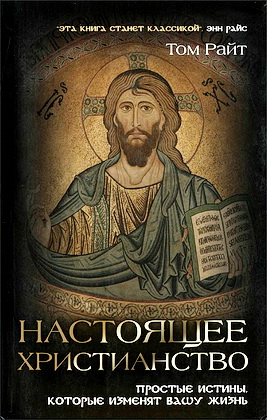
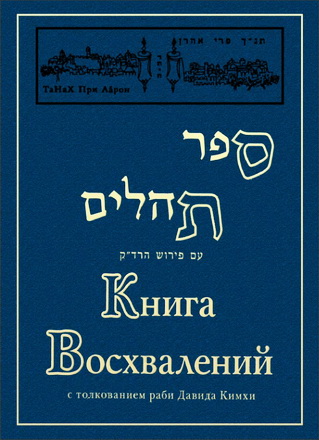
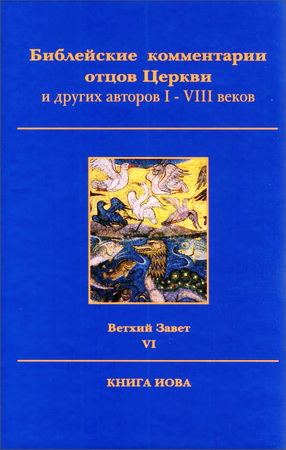
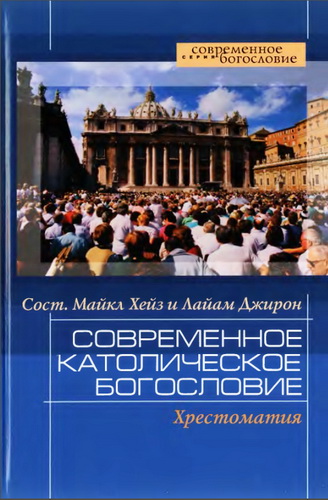
Комментарии (1 комментарий)
Спасибо за Бломберга! У меня было старое издание, да и в худшем качестве...